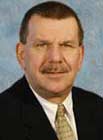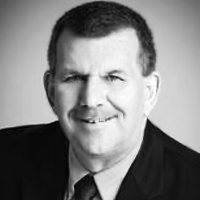Interview with Tom Powers, Ph.D., VP, Audiology and Professional Relations, Siemens Hearing Instruments, Inc.
 Paul Dybala: Hello everybody. This is Dr. Paul Dybala with Audiology Online. Today I have Dr. Tom Powers, the Vice President of Audiology and Professional Relations for Siemens, talking to me about the brand new NITRO 16 high-power CIC hearing aid announced in a press release January 21, 2008. Tom, thank you for talking with me today.
Paul Dybala: Hello everybody. This is Dr. Paul Dybala with Audiology Online. Today I have Dr. Tom Powers, the Vice President of Audiology and Professional Relations for Siemens, talking to me about the brand new NITRO 16 high-power CIC hearing aid announced in a press release January 21, 2008. Tom, thank you for talking with me today.
Tom Powers: Thank you. It is my pleasure to be here.
Dybala: Can you start by telling us about the history of the NITRO series?
Powers: Usually, when we introduce custom products, we introduce an entire line from ITEs to half shells and so forth. NITRO was a little unusual in that we only introduced NITRO as a high-power CIC application with two power levels, a 55 dB model, which is not that uncommon, and a 70 dB gain instrument, which is a high-power instrument with about 130 dB SPL of output. We wanted to provide a new level of power in the CIC area with a moderate level of technology. We had a lot of interest in that product; therefore, we started to look at how we might be able to upgrade the original NITRO with additional features, which led us to NITRO 16.

OSPL90 for the Siemens NITRO CIC 118/55 and CIC 128/70
Dybala: What are these new features in NITRO 16?
Powers: NITRO 16 borrows technology from our other premium products. It is a full 16-channel device, and it has a lot of frequency-shaping and compression capabilities within the 16 channels. There are eight handles for adjusting the compression, but there are 16 independent compression channels processing sound.
In addition to a traditional noise reduction system, the NITRO 16 also has our Sound-Smoothing™ technology for transient noise signals. SoundSmoothing was introduced in our CENTRA™ product line and it is designed to attack transient sounds such as dishes and papers rattling, the types of sounds for which compression and traditional noise reduction are not effective.
Siemens NITRO CIC
We also incorporated our data logging, which really helps the clinician take a look at the patient's use of the instruments. In cases of a binaural fitting, it also gives some indications when you connect it to the fitting software if there is a discrepancy between left and right wearing time. This is useful, because without it, you ask the patient, "Have you been wearing both?" and the answer of course is always, "Yes."
The biggest aspect of NITRO 16 is to continue the power versions of NITRO with 70 dB and 55 dB gain options.
Dybala: I understand you made changes to your existing noise reduction system to better account for more severe hearing loss in NITRO 16. Can you explain?
Powers: Certainly. Individuals with severe to profound hearing loss rely on the high-frequency information as well as mid to low frequency information they can pass through the cochlea; therefore, we assessed how our noise reduction circuits were working in some of the default settings. We wanted to make sure that they were not so aggressive that they reduce too many of the low frequency cues that the patient may rely on yet still provide some noise reduction in noisy environments.
Of course, if the patient prefers more or less noise reduction in lieu of low frequency information, the professional has the control to adjust the level of the noise reduction in the software; however, we recognize that taking out all of those low frequencies will probably cause some concern for people with that degree of hearing loss.
We take this into account when we do our First Fit, and we think it has been a welcome change in our fitting philosophy.
Dybala: How is Siemens able to achieve up to 70 dB of gain in a hearing aid as small as a CIC?
Powers: Well, it is quite a challenge. We worked with our component suppliers to adjust the receiver, because that is really where we get the power. The 70 dB gain instrument has a fairly large receiver, which does require a significant amount of space. To account for this, we developed a special tool for taking a look at the impression.
The second piece was to incorporate our adaptive feedback system, our phase-cancellation system that is adaptive in that it looks at the feedback and tries to manage the attack and release of the feedback system, depending on the type of feedback. This is automatic; the patient does not have to do anything. It works like all of our other premium feedback cancellation systems, but it is necessary for a very high-power CIC. It is a very important part of the whole technology package, because the microphone and receiver are not as close in any other product as they are in a CIC.
Basically, we took a holistic look at CICs then evaluated each segment to try to incorporate technology features that allowed more gain.
It is very common for professionals to ask us if that much gain is truly available, and we are excited to tell them it is true. We are thrilled to provide this product that offers so much in such a little package. In addition, some of the patient testimonials are very gratifying; we are very pleased with the product.
Dybala: Well, the last thing I want to touch on today is the trend in hearing aid styles over the years. The market seems to be shifting from a primarily ITE market to a growing BTE market. Where does a power CIC fit into this trend?
Powers: It is really a very interesting change in the whole market. I think it was about 1985 or 1986 when we went from a BTE to an ITE market. Now, here we are, 20 or so years later and we are shifting, and continuing to grow back into a BTE market.
Regardless of the shift, I think cosmetics will always be a focal point in amplification for many people with hearing loss, not that it should not be the only driver for the decision on the part of the professional as to what product someone is going to wear.
Until not too many years ago, we considered customs to be the cosmetic option; although, you can debate that for full-shell ITEs. Full-shell ITEs are pretty visible, but because they are "in-the-ear," I think the patient perception is that, once it goes in there, nobody sees it. Now the perception is that these small BTEs with the thin tube are barely perceptible if you look at them from the front.
Therefore, we have seen a shift to those products for mild to moderate losses. Being open, of course, has a huge appeal to those patients who came in wearing CICs, living with occlusion problems for the sake of cosmetics. Now, they have been released from that issue and have moved into a whole new class of open fit and receiver in the canal products.
Knowing this, we wanted to find a way to take what we have learned about CICs, in terms of making shells, packaging, and working with component manufacturers, to offer a CIC option to some of those more moderate to severe hearing impaired individuals who still may not have access to those open-fit type products.
There are people using receiver in the ear hearing aids with closed ear molds and so forth, but to really push the kind of gain and output we are talking about here, we are not quite there yet. NITRO offers patients with severe hearing loss an opportunity to move into a more cosmetically pleasing product.

Fitting Range of the NITRO CIC 118/50 and NITRO CIC 128/70
Again, I want to reiterate that cosmetics are important to patients. It is important to professionals as well, but we need to look at the technology and the patient's needs first. That is why NITRO 16 has features such as data logging, advanced Speech and Noise management, phase cancellation, SoundSmoothing, and all the features that you can possibly pack into a small package with a big gain factor.
NITRO 16 is almost bucking the trend of going to the open side, but if you really think about the market as a whole, there have not been too many innovations in the sense of something like a power CIC for people who need power aids. We have put technology in BTEs for them, but this offers, I think, another opportunity.
This is especially applicable for the younger, more active hearing aid wearers. We do not see as many of these individuals as we would like to see, but we are seeing more and more of them, and NITRO 16 offers another alternative for the professional to choose when they are sitting down and talking to the patient who may have a severe loss and is looking to purchase a new instrument. Clinicians can now go past just looking at the range of BTE options and also consider this CIC option, which is especially nice for patients that are outdoors, are runners, or are active in any of those types of activities.
This is why we wanted to bring NITRO 16 to the market, for this population of individuals. We are very happy with the response from the market, so we are glad we did it.
Dybala: Well, thank you Tom. If anyone wants additional information on NITRO 16, you can go to the Siemens Hearing website at www.siemens-hearing.com. We also have a web channel with information on Siemens Hearing here at Audiology Online at www.audiologyonline.com/channels/siemens.asp. Tom, again, thank you for taking time to visit with me today.
Powers: Thank you, and thanks to Audiology Online.
More about Siemens Hearing Instruments
Siemens Hearing Instruments Inc., the largest US hearing aid manufacturer, is headquartered in Piscataway, New Jersey. As a subsidiary of Siemens Medical Solutions, Siemens Hearing embodies a corporation dedicated to research and cutting edge technology. Not only does Siemens have an extensive history of helping the hearing impaired, every year, Siemens Hearing Instruments expands, developing new hearing aids and assistive listening devices for individuals of all ages with mild to profound hearing loss.


